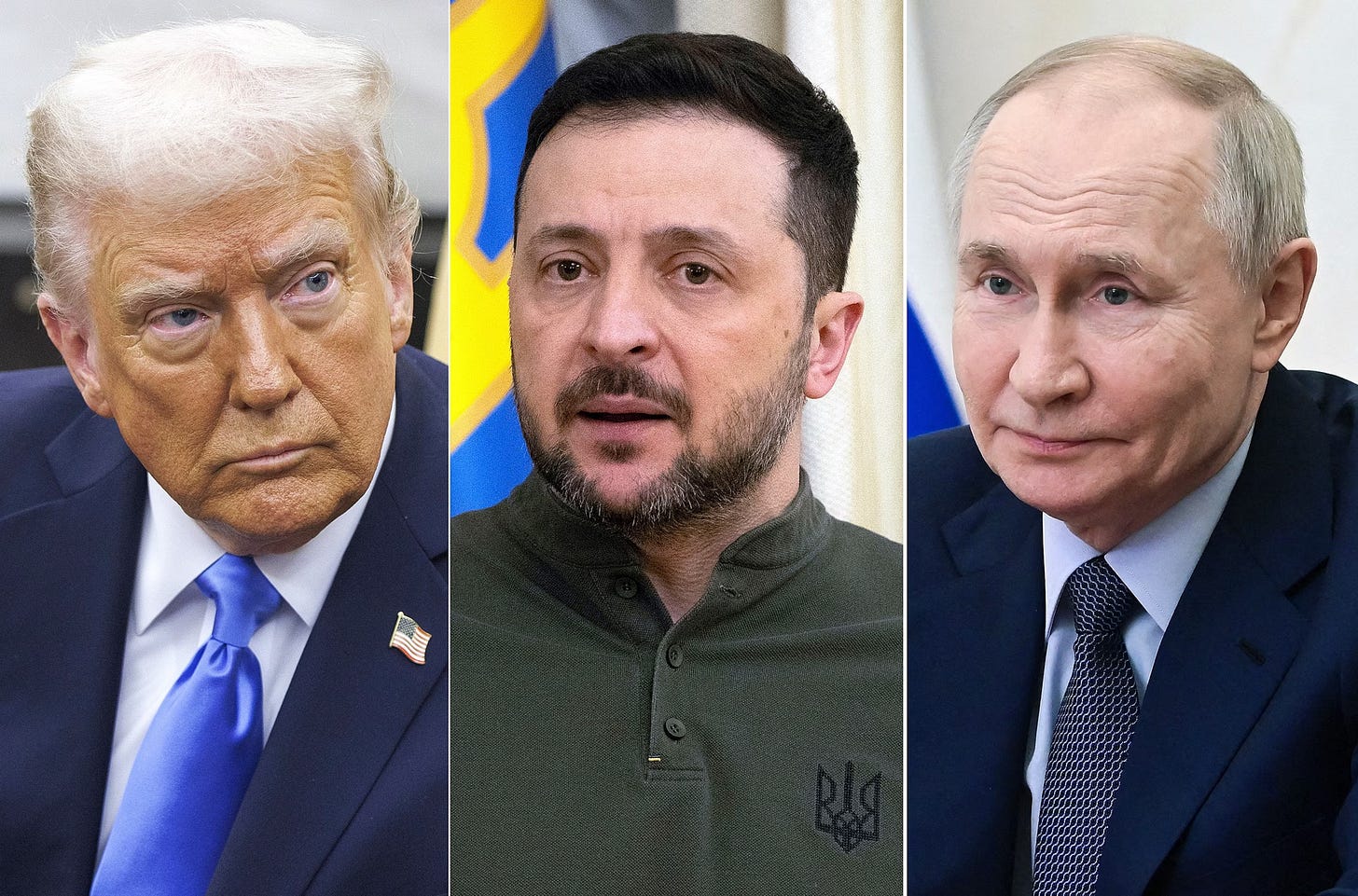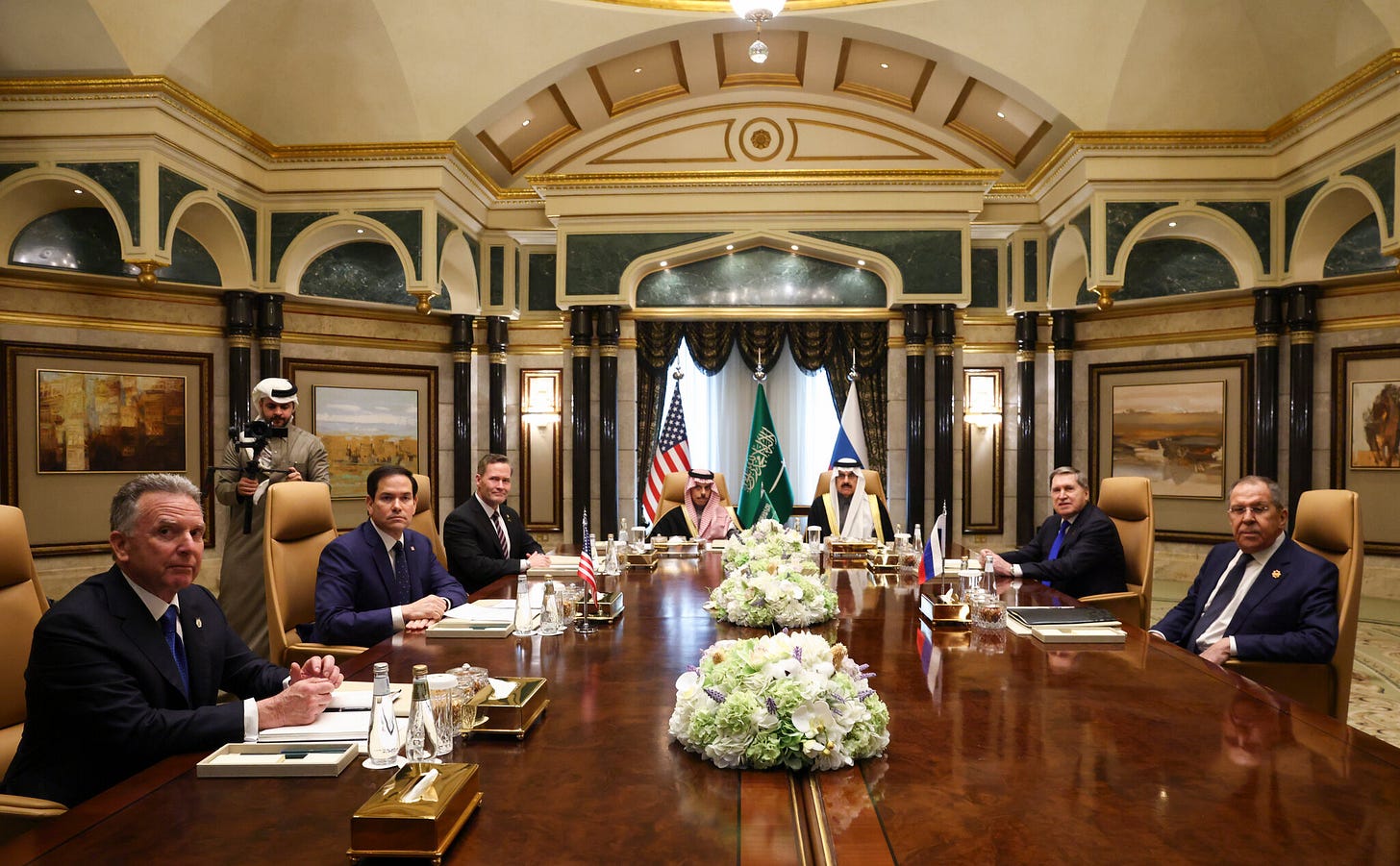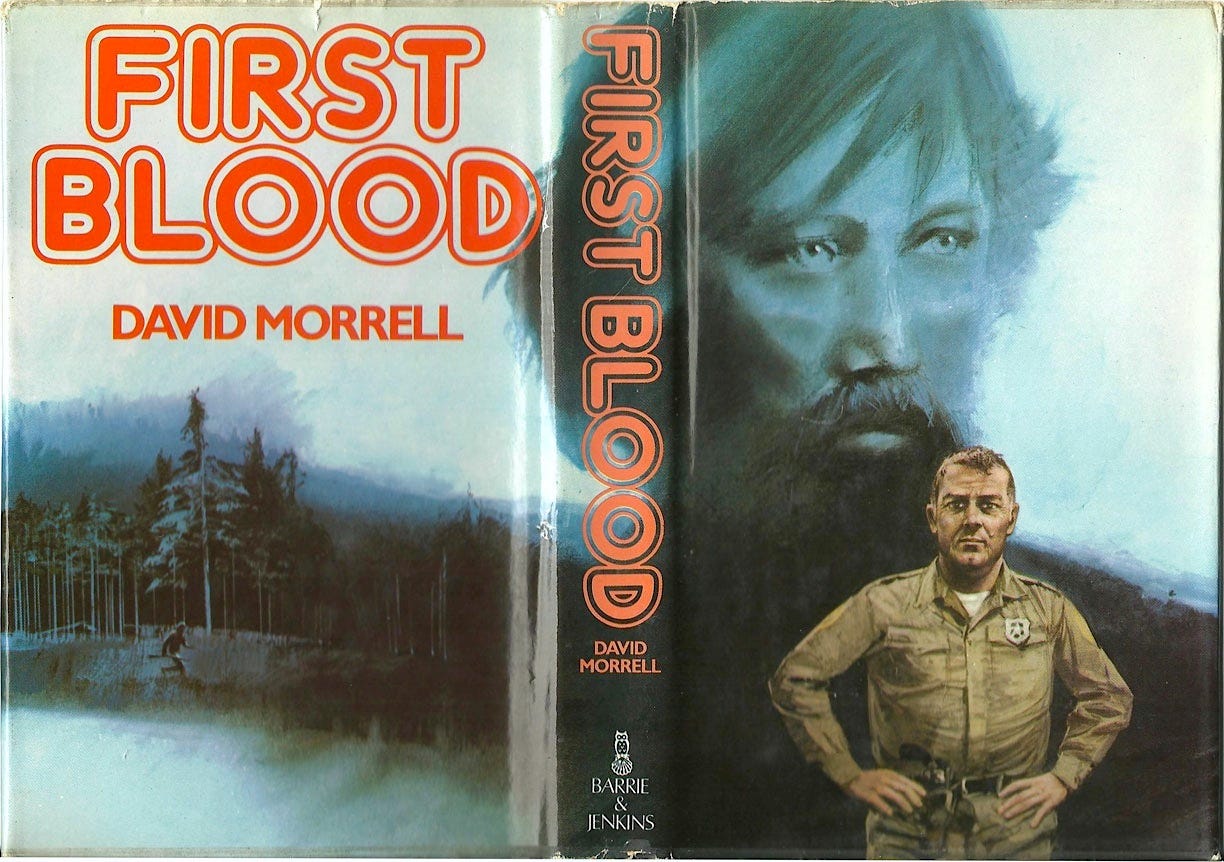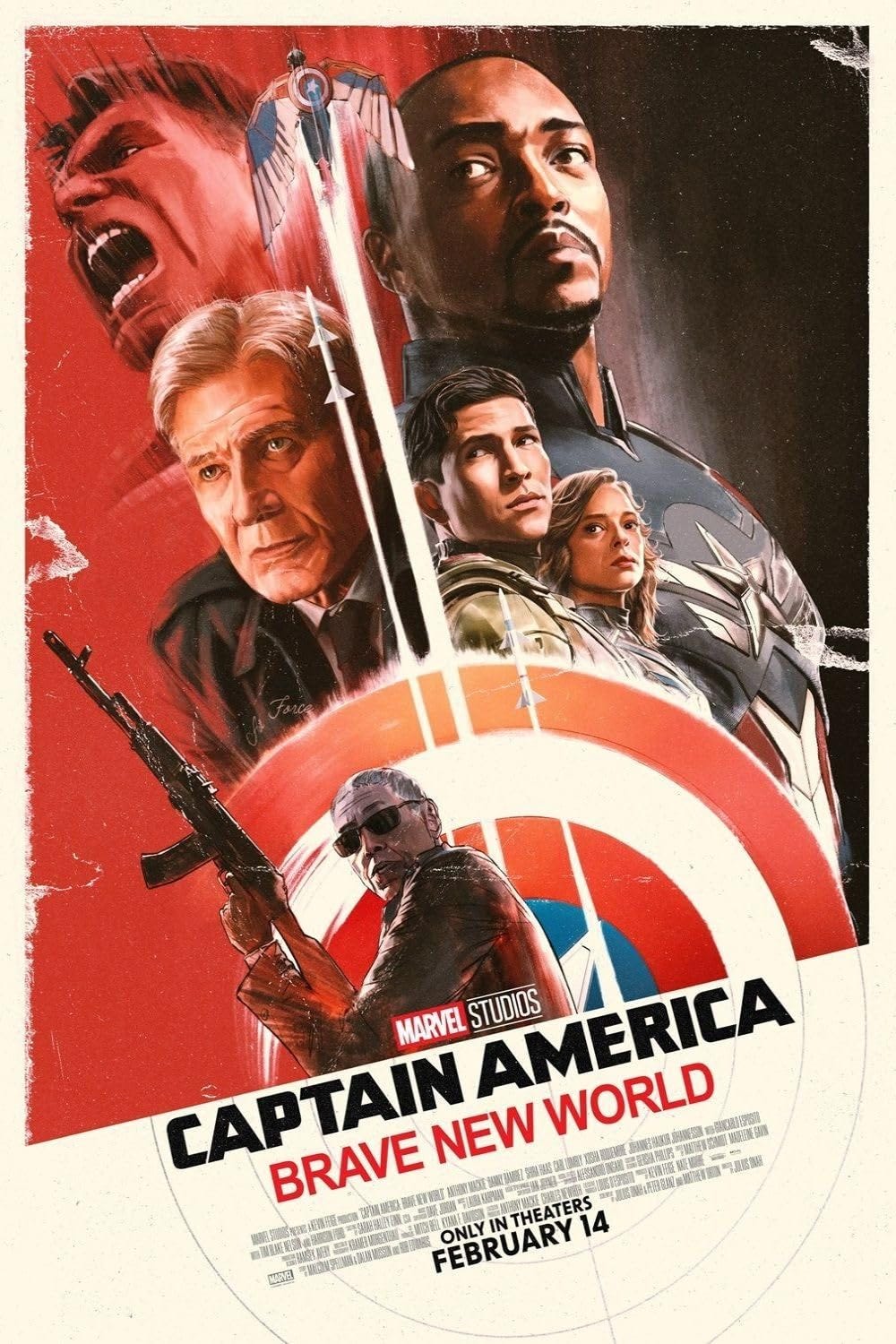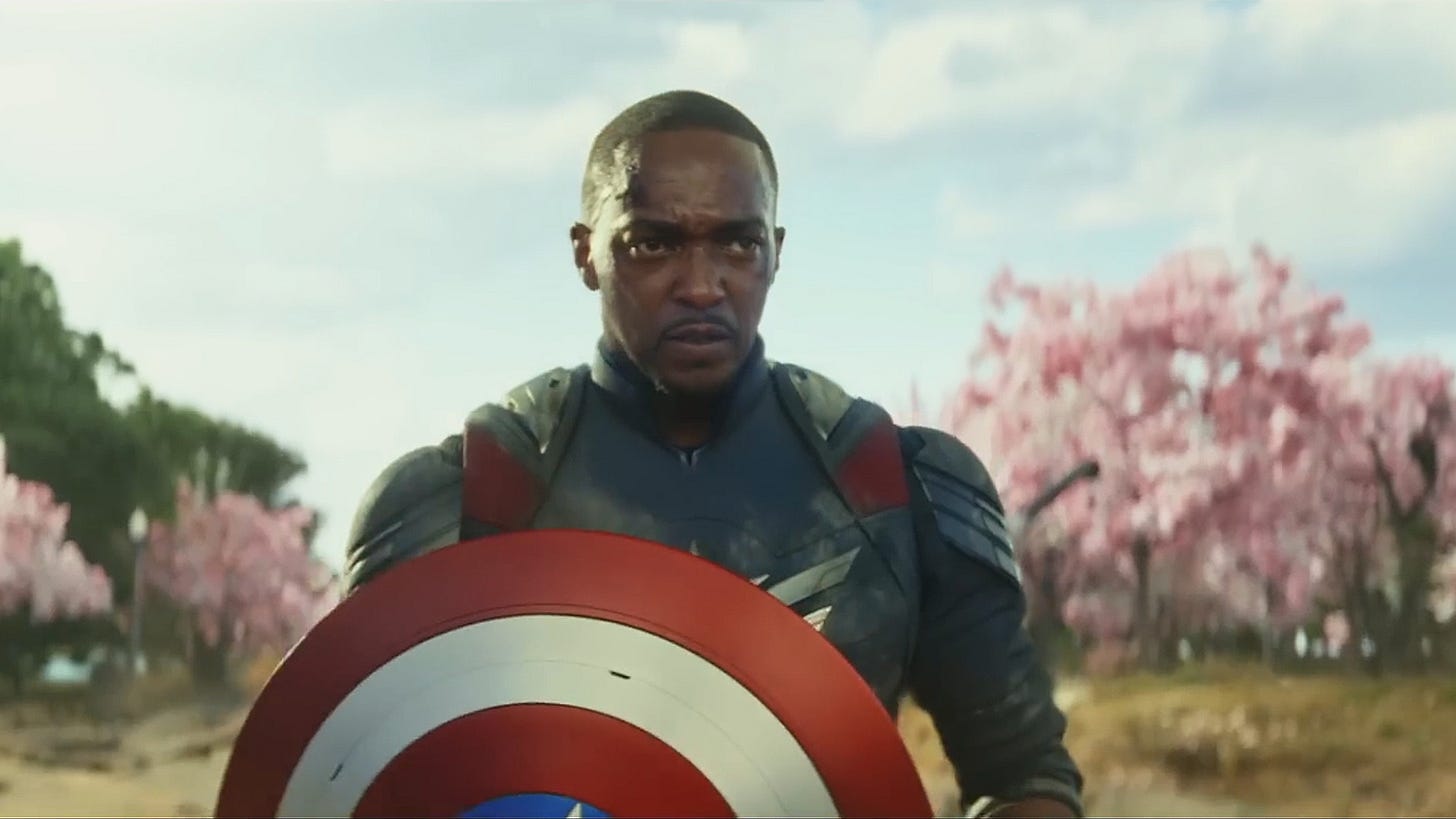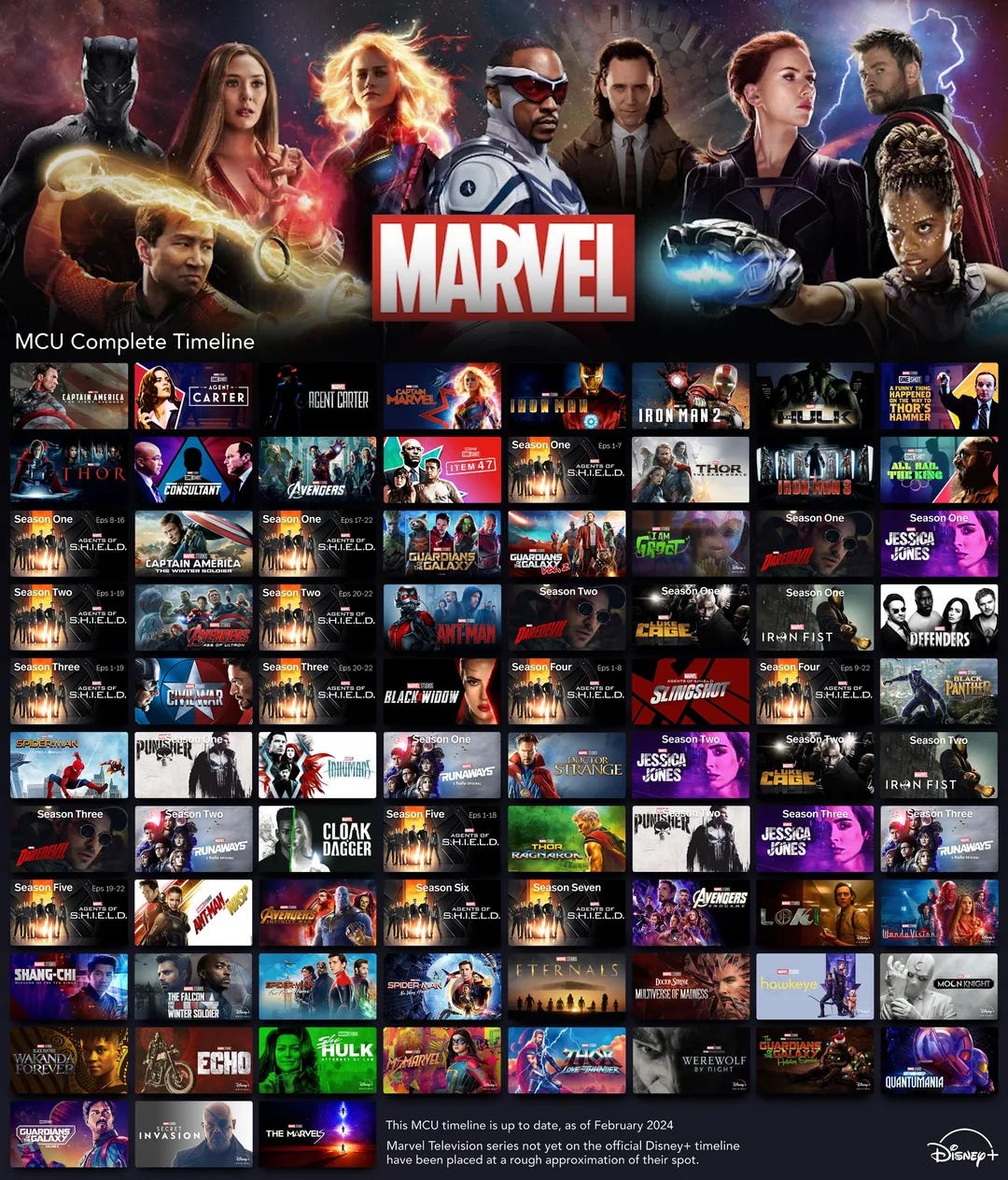Bonus Perspectives: The Future of Ukraine, Switch 2 Price Rumors, "First Blood," and "Captain America: Brave New World"
Why Ukraine isn't lost, Nintendo's Switch 2's pricing dilemma in Japan, and your weekly media recommendations.
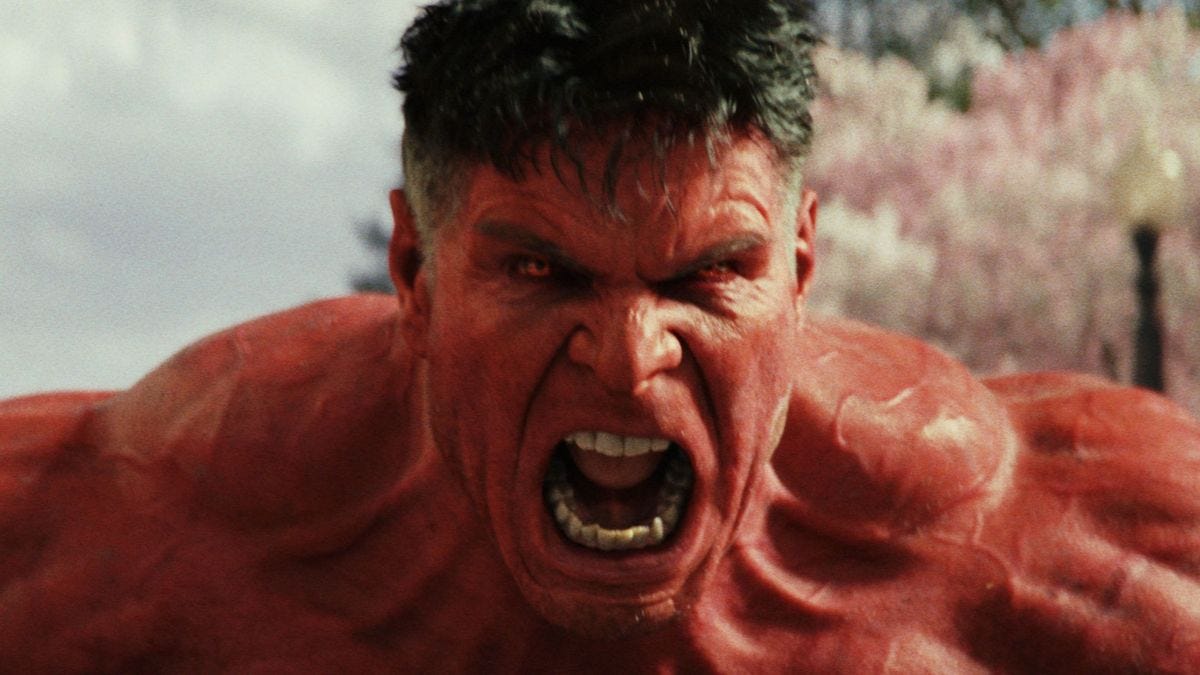
Bonus Perspectives is a weekly column series containing my thoughts on the latest international news and Japanese news, as well as film, television, music, book, and video game recommendations. It’s free for all subscribers to this Substack, but if you enjoy my writing, consider opting for a paid subscription. Doing so will give you access to exclusive in-depth pieces and my entire backlog of work. Your support is greatly appreciated!
Trump’s talks with Putin are not the last the word on Ukraine’s fate
Donald Trump has finally spoken to Vladimir Putin and begun the process to tackle the war in Ukraine. The U.S. president announced last Wednesday that he had held a 90-minute conversation over the phone with his Russian counterpart, claiming that negotiations to end the war will begin “immediately.” Volodymyr Zelenskyy also reportedly spoke to Trump afterward and on Friday met with Vice President JD Vance for talks at the Munich Security Conference. Ukraine’s president stressed that “real security guarantees” for his country’s independence are needed before any in-person summit with Putin can occur.
Needless to say, it’s an increasingly uncertain time with what the future of Ukraine will be. An entourage of top officials in the Trump administration met with Russian officials in Saudi Arabia on Tuesday to discuss the next stage of the war, but it remains to be seen what will happen next as precise terms for a ceasefire are still up in the air. Ukraine not being part of those talks is raising some concerns that Zelenskyy is being sidelined, but U.S. Secretary of State Marco Rubio is framing the meeting as a gauge to see if peace negotiations with Russia are “a real thing or whether this is an effort to buy time.” For the time being though, it seems that negotiations will continue.
It’s understandable why many across the world are sounding the alarm on what will happen to Ukraine, but I think some reality checks are in order. First, the United States is not going to abandon Ukraine. Despite some concerning isolationist voices within the Republican Party, Donald Trump himself has been consistent with his stance that aid to Kyiv will still continue. Even JD Vance, who previously stated that he “[doesn’t] really care what happens to Ukraine one way or another,” is now changing his tune. The vice president explicitly affirmed Washington’s support of Ukraine’s “sovereign independence” and sparked headlines when he referred to “military options” also being on the table. That’s the complete opposite of “not caring” to put it mildly.
Second, Trump and the majority of people in his administration are well-aware that Ukraine being taken over by Russia would be a disaster for American interests and international society. While the president himself has said flowery things toward Putin and other dictators, that means far less when one sees that his first administration consistently imposed new sanctions on Russia — and that was before the invasion of Ukraine. Rubio has been consistent with his criticisms of Putin and so has National Security Advisor Mike Waltz. It would be no stretch to say that Russian tanks rolling into Kyiv would make Trump look just as bad as Biden did when the Taliban took over Afghanistan. If there’s one thing the president famously hates, it’s appearing like a loser.
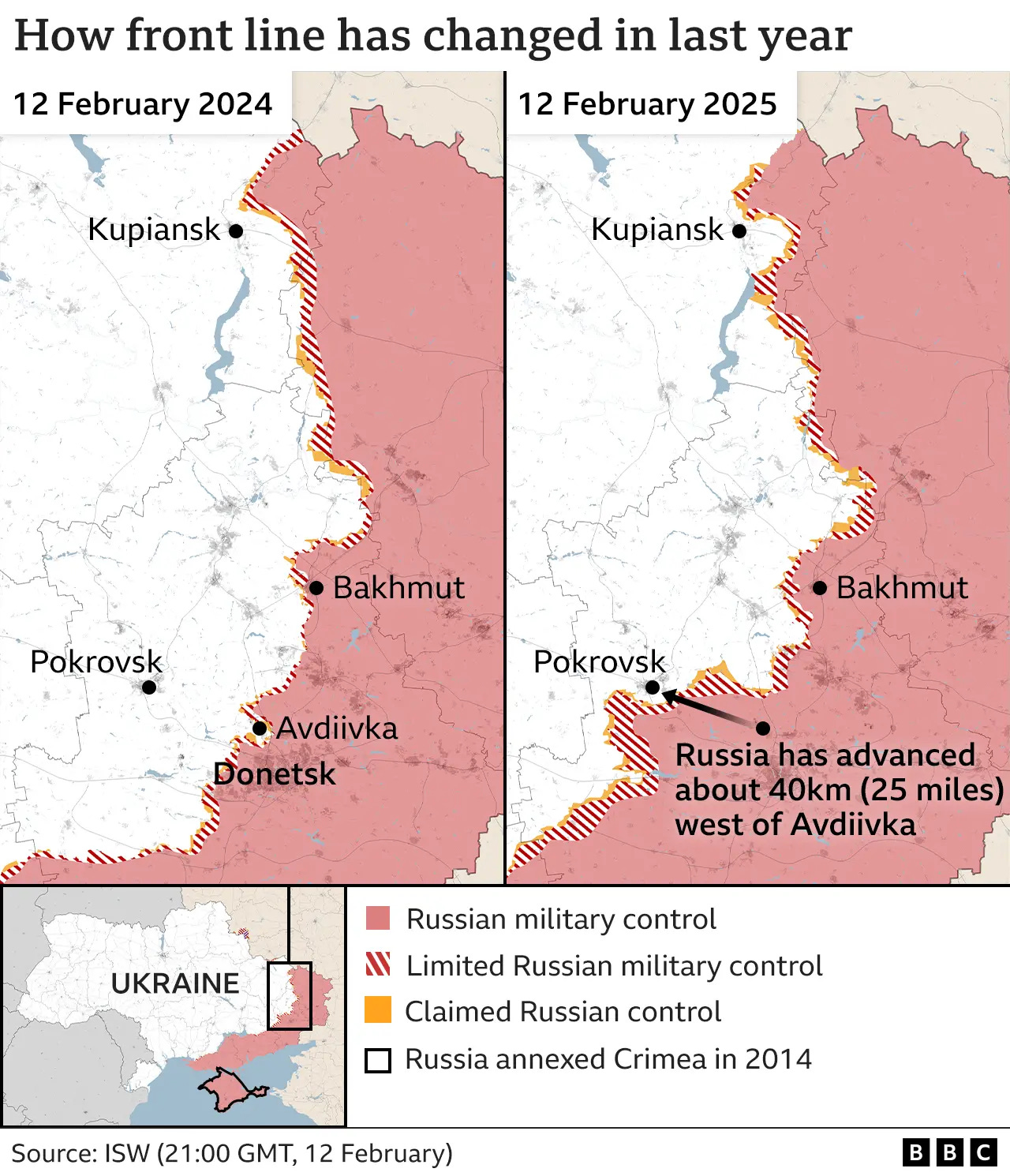
Third, and probably most controversially, Ukraine will inevitably have to give up some territory. It’s an utter travesty that Russia annexed Crimea in 2014, but the ship has sailed on that issue for the foreseeable future. Unless the international community puts boots on the ground which would turn the war in Ukraine into World War III, Kyiv is going to have to cut its losses in some areas. I have many Ukrainian friends and followers who will strongly disagree with that, but Zelenskyy himself knows that he has to consider what is realistic, not what is ideal. At this stage, it remains to be seen what shape Ukraine and Russia’s borders will take. The biggest tragedy will be for the people caught in the middle of this land-carving having to choose what side to be on, which will inevitably lead to decades of further anguish for separated families and displaced individuals, but wars rarely ever provide clean outcomes.
This brings me to my fourth point, which is more optimistic: Ukraine will survive. My friend Noah Smith recently wrote this column arguing that the future of the country will probably look something like Finland. I highly recommend reading it because it provides several insights that I agree with, but to briefly summarize, Finland fought the Winter War and the Continuation War against the Soviet Union from 1939 to 1944. On paper, it looks like Finland lost because it had to sign agreements giving up territory while abiding to other conditions that limited what geopolitical actions it could take. Yet the sovereign country known as Finland continues to exist today and no one would seriously argue it’s doing poorly. In fact, it’s one of the best places in the world to live.
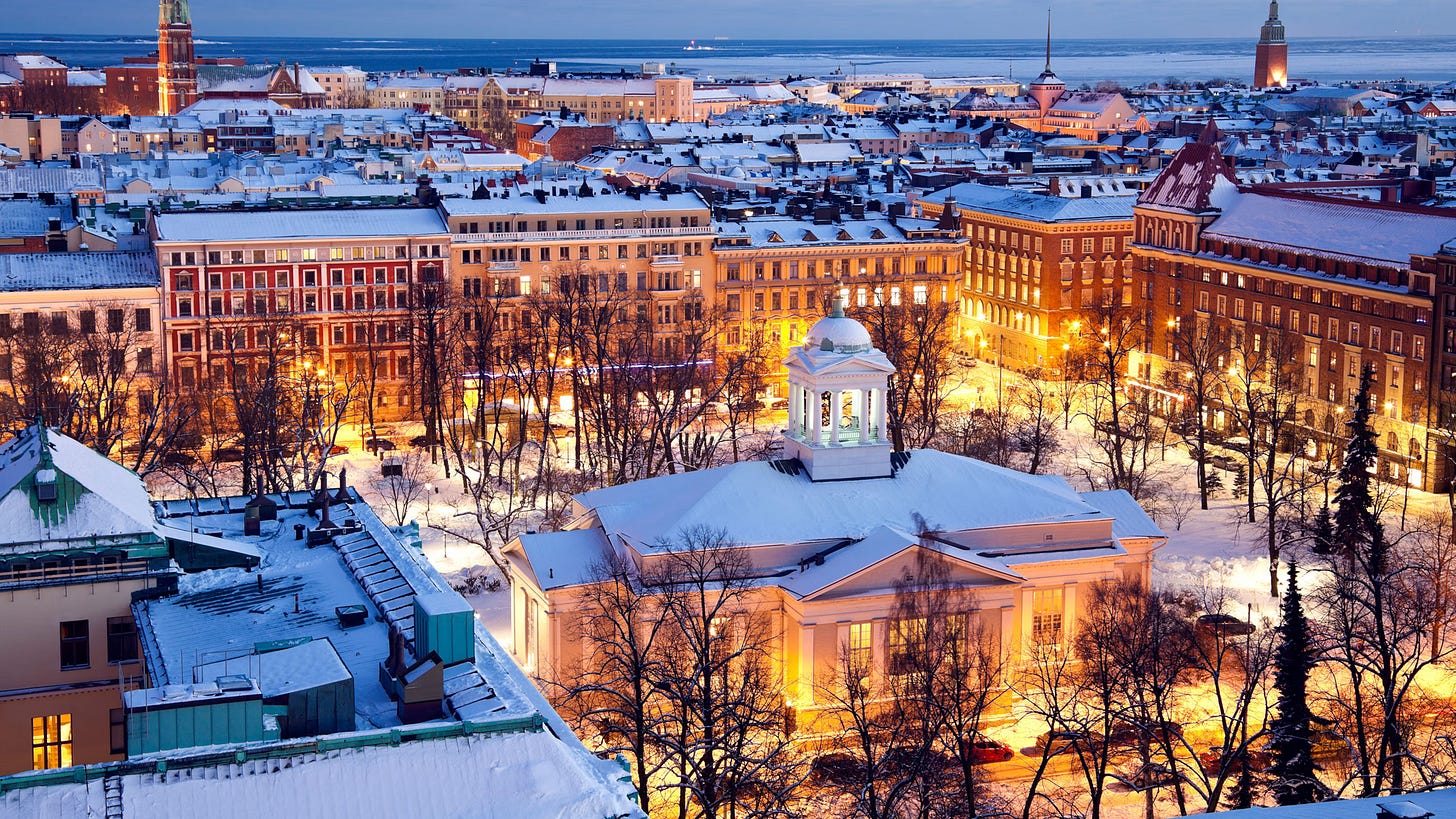
Let’s be clear though, Ukraine has a long way to go before it gets there. While the details are still being ironed out, both Kyiv and Washington appear to be in lockstep that any negotiations with Russia will have to guarantee Ukraine’s long-term security. It would not be surprising if parts of the region ended up turning into some kind of demilitarized zone akin to the middle of the Korean Peninsula. That is to say “peace” will still be an illusion and Russia will continue to make loud noises about its territorial ambitions, but with the hot fighting having largely ceased and the war itself turning into a frozen conflict.
This scenario is obviously not anyone’s idea of a perfect resolution, but there is currently no viable scenario in which both sides will walk away completely happy. Yet just like Finland, South Korea also continues to exist as a successful sovereign country despite being bordered by a dangerous neighbor. Ukrainians have proven themselves to be a resilient people, while their economy is seeing surprising growth despite the trying wartime conditions over the last few years. Once its security guarantees are provided, the country will continue to develop with continued assistance from the international community. The challenges ahead will no doubt be tough and later generations will be burdened with addressing significant issues that cannot be solved today, but nothing points to Ukraine being a lost cause.

Update: Shortly before I was about to hit publish on this column, Trump made some statements claiming that Ukraine “could have made a deal” earlier and appeared to even blame them for the war happening in the first place. I obviously disagree with this framing, but I don’t think any of this really changes my central thesis. I still think that the United States will continue to support Ukraine’s sovereignty and ensure that they have viable security guarantees. It shouldn’t surprise anyone that Trump is a loudmouth who says ridiculous things. What actually matters are his administration’s actual policies, as I pointed out with his sanctions. I will provide my thoughts on future updates around Ukraine as they come.
Nintendo faces a difficult choice with the Switch 2 in Japan
With there not being too many interesting Japan-related headlines this week, I thought I’d take the time to finally weigh in on the Nintendo Switch 2, which was officially announced last month. I’m particularly interested in what the machine is going to end up costing, especially over here given how much the weak yen is making consumer electronics absurdly expensive. See my piece last year on Sony jacking up the price of the PlayStation 5 in Japan for one example.
First things first, what do I think of the name “Switch 2?” It’s fine, perfectly fine. Look, Nintendo realized with the Wii U that they can no longer take the risk of relying on gimmicky names and expecting the average consumer to understand that it’s the next generation of video game hardware. Going along the lines of “Super Nintendo Switch” or God forbid “New Nintendo Switch” like the horribly named 3DS model from 2014 would just be a repeat of bad history. Switch 2, like PlayStation 2, immediately tells people that this is the next stage. Nothing more, nothing less.
The initial reveal trailer showed that the unit itself will be bigger and that the detachable Joy-Con controllers will use magnets instead of just latches, but I have some concerns. I really hope that Nintendo will give us an OLED screen out of the box and not release yet another model with the better display technology a few years later. I doubt that this wish will be granted because it makes financial sense to hold off on more advanced features, but it would be a huge disappointment having to go from an OLED normal Switch to a far inferior LCD Switch 2 when the latter is going to have better graphical specs.
What Nintendo is more likely to improve is their approach to the controllers. The original Joy-Cons were a neat concept, but they were prone to numerous hardware failures. Their analog sticks ended up notoriously drifting and virtually every Switch owner would encounter this problem at some point, the present author included. Fans have responded by creating their own mods using better parts, but the onus is on Nintendo to avoid this problem the second time around. Also, the Switch 2 Joy-Cons should swap out the plastic buckle locks for metal ones which better prevents them from accidentally detaching.

Rumors are abound that the Switch 2 Joy-Cons will provide support for controls akin to a computer mouse. I hope this proves to be true, as this could definitely open up the system to have better PC and Wii ports while also introducing new innovative control schemes. Yet at this point we have no idea what the actual specs of the Switch 2 are. Current speculation is that the device will probably be somewhere between a PS4 and PS4 Pro. With nearly all existing Switch games set to be backwards compatible, that could make some titles like The Witcher 3 and Kingdom Come: Deliverance run much better now that they won’t be held back by hardware that was already showing its age back in 2017.
Of course, the Switch 2 being a portable PS4 will still make it feel outdated next to the PS5 and Xbox Series X on paper, but I’m not really worried. Nintendo’s first party titles are always well-optimized and hardly require the best of the best. Third party devs managed to pull miracles even on the original Switch, so having more room to breathe will allow them to update older titles and port others that were slightly too demanding. At this point, no one really expects Nintendo to have the same AAA games Sony and Microsoft have. That’s completely fine because they’re aiming to provide a different experience and given the gangbusters sales success of the Switch now, clearly they’re doing something right.
Unfortunately for Nintendo, things are not so straightforward when it comes to pricing the damn thing. A recent leak from a Canadian retailer suggested that the Switch 2 will cost $499 CAD, which converts to approximately $350 USD or €340. In Japan’s case, that’s an eye-watering ¥53,000. To be clear, this is not the final price and only a placeholder. However, we can expect the Switch 2 to be in that rough ballpark. For an idea of how unbelievably bad that would be for the average Japanese consumer, the original Nintendo Switch back in 2017 cost ¥30,000, while the upgraded OLED model was around ¥38,000 in 2021. Even if we take into account inflation and expected price increases for better hardware, it’s abundantly clear that Japan would be getting screwed over compared to the rest of the world if the Switch 2 costs over ¥50,000. And no, wages have not increased.

Nintendo of Japan now faces of a tough conundrum. If they price the Switch 2 in relation to what the yen is actually worth compared to the U.S. dollar, then it can expect lower sales within its domestic market. This in turn could possibly lead to a similar problem the PS5 also faced with slow adoption and even further sluggish sales due to the price hike. Looking at the data, the PS5 was estimated to have sold about 210,000 units in Japan in Dec. 2023. Exactly one year later and after the PS5 Pro was revealed, those numbers were down to 160,000 units. Sony doesn’t seem as bothered by this since its focus is now with the North American and European market, but Nintendo would be wary to alienate its Japanese consumers as they still represent a considerable chunk of their audience.
On the other hand, Nintendo lowering the price of the Switch 2 specifically for the Japanese market creates its own set of problems. A console at ¥40,000 or less would certainly lower the financial burden on the consumer, but also lead to a severe reduction in profits. Furthermore with the huge surge in overtourism, it would not be an unrealistic scenario if foreign tourists took advantage of the weak yen and snatched up the Switch 2 while visiting the country. This would take the Switch 2 out of Japanese consumers’ hands and encourage scalping to foreign markets. Nintendo could possibly combat this by requiring retailers to only allow purchases to residents of Japan, but such practices would inevitably spark controversy around ethics and discrimination. Given Nintendo’s squeaky clean reputation, I doubt they would want to deal with that headache.
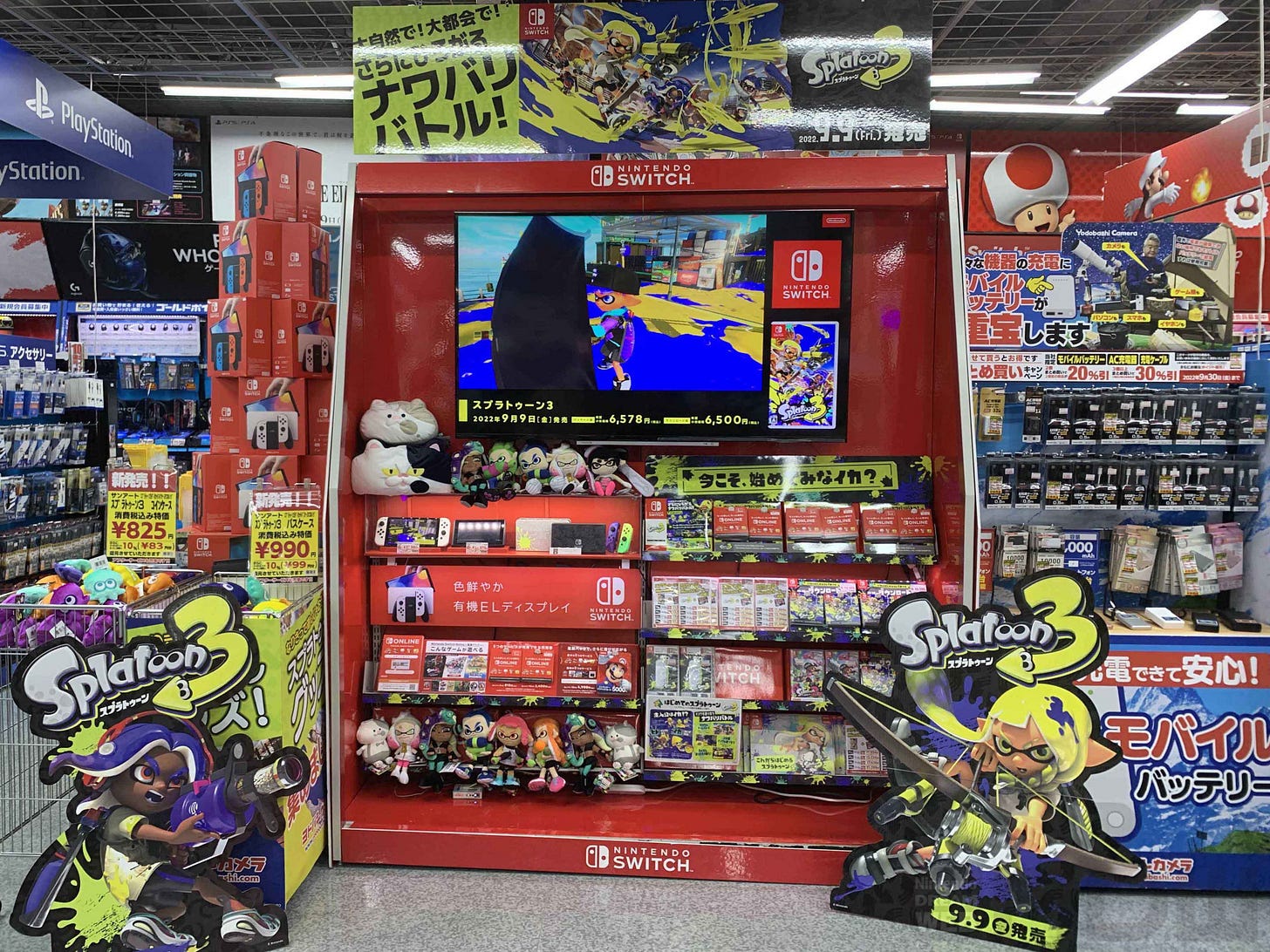
At the end of the day, perhaps Nintendo will simply bite the bullet and ask that Japanese gamers cough up more cash. It’s not a scenario that anyone wants, but Nintendo holds enough brand loyalty where a ¥50,000 or more Switch 2 isn’t actually that unrealistic of an ask. While more consumers in the past may have been able to afford both a PlayStation and Nintendo system, we will likely reach a point where people in this country have to choose one or the other. Even with a price hike, Nintendo is still cheaper than Sony and quite frankly, they also are providing more interesting titles at the moment too.
What I’m reading — First Blood the novel is a very different Rambo
This month I had the privilege of attending a screening of First Blood at an independent cinema in Kobe. It’s been a few years since I’ve last seen the Rambo films, but I’ve always enjoyed them since I was a teenager and consider them to be quintessential American cinema. The first is obviously the best with its surprisingly moving depiction of the PTSD American soldiers went through after returning home from the Vietnam War. Sylvester Stallone turns in one of his best performances and I think Richard Crenna in particular is quite overlooked as Colonel Trautman.
Rambo: First Blood Part II (what a confusing name) and Rambo III are utterly ridiculous, but as guilty pleasures they never cease to be entertaining. Rambo (or Rambo IV, or Rambo: The Fight Continues, or Rambo: To Hell and Back, or John Rambo, or why the hell can’t this series just have normal titles?) is the only sequel which matches First Blood on an artistically mature level and should have been the last one. The less said about Rambo: Last Blood the better, though I will admit that as time goes on I do think it has a few cool moments.

I had never gone back to check out the original First Blood novel until my recent rewatch of the film, but better late than never. Like many readers only familiar with the cinematic version of the character, I was surprised to find out that Rambo in David Morrell’s book is an entirely different beast. You probably imagine John Rambo in your head as a hardened block of granite with a stone-faced expression to match, but from the opening pages of First Blood he’s basically a dirty hippie and doesn’t even have a first name. He’s much closer to what a homeless drifter in early 1970s America would probably look like compared to the stoic depiction provided by Stallone.
The novel also places much greater emphasis on police chief Wilfred Teasle. Morrell wanted Rambo to represent disaffected youth, while Teasle would provide the viewpoint of the older, more conservative generation. Given the heavily polarized social environment of the United States at the time, Morrell intended for both sides to carry equal weight. The story shifts between both of their perspectives, and as a result Teasle is a much more sympathetic character here. Rambo also kills far more people, while in the film Stallone’s John Rambo was only responsible for one death and even that can be argued as accidental.
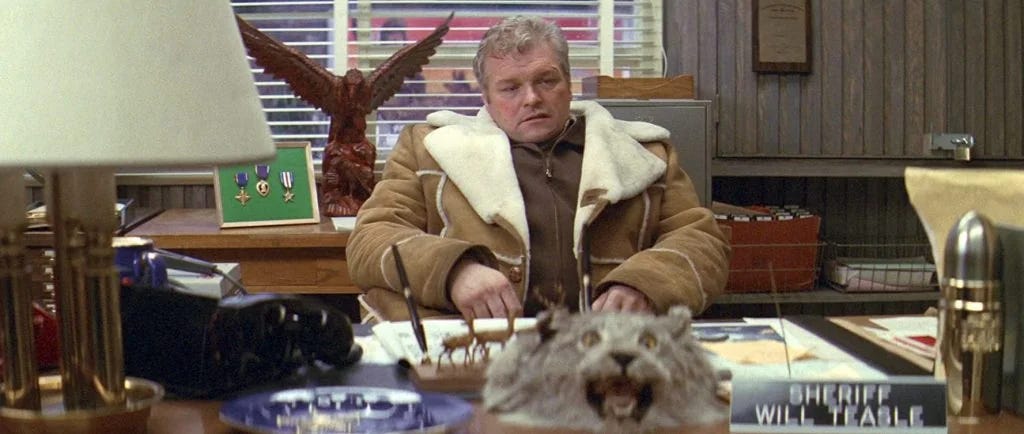
First Blood the movie cuts out much of Teasle’s backstory. In the book he’s a Korean War veteran, while the film only briefly shows his medals in the background. Because he fought in a war most Americans have forgotten about, his dislike of Rambo is further contextualized when he finds out about his service in the more famous Vietnam conflict and being awarded the Medal of Honor. Touches like that make Teasle more of a nuanced person, but the film is more interested in focusing only on Rambo’s story. The first cut of First Blood reportedly ran at over three hours before being edited down significantly, so perhaps these details were originally going to be included.
There are other differences with the ending especially being a significant departure, but I won’t spoil them. David Morrell writes in a very concise, economical manner that’s very accessible to the average reader. In the book’s introduction, he compares the Rambo books and movies to “trains that are similar but headed in different directions.” He ended up writing novelizations of the two sequels to better match the characterization of what he depicted in First Blood, but felt that the fourth Rambo film already matched his creative vision. On the other hand, Morrell has been quite vocal with his criticisms of Rambo: Last Blood, calling it “a mess” and that he was “embarrassed to have my name associated with it.”
While I’m generally against the concept of most remakes, I would be interested in seeing a more faithful adaptation of Morrell’s novel. Quentin Tarantino floated a non-serious pitch for another version of First Blood starring Adam Driver as Rambo (making him closer to the novel’s hippie depiction) and Kurt Russell as Teasle. Given that Morrell doesn’t own the film or television rights to the character though, it’s unlikely that such a project will see the light of day anytime soon. In any case, I will definitely be checking out his novelizations of the Rambo sequels and also hope to eventually read some of his other books.
What I’m watching — Captain America: Brave New World is one of the movies of all time
Did anyone ever think this had a chance of being anything other than underwhelming? It’s easy to forget now, but Captain America: Brave New World was originally called Captain America: New World Order and supposed to hit the big screen on May 3, 2024. Everything from the SAG-AFTRA strike to the studio getting cold feet over depicting an Israeli superhero plagued development and turned what should have been a straightforward fourth Captain America movie into a production nightmare. Things were apparently so fraught with worry behind the scenes that reshoots were undertaken as late as November of last year.
With all of that in mind, it’s frankly miraculous that the final cut of Brave New World isn’t a total disaster. There have been far worse MCU projects and this is nowhere near as bad as something like The Marvels or Secret Invasion. But is it any good? Put it this way, I watched it on the first day of its premiere last Friday with a half-full audience and by the end of the weekend most of what I had seen was long gone from the recesses of my memory. In short, it’s middle of the road MCU. Perfectly serviceable for an evening to shut your brain off, but about as memorable as the popcorn you ate with it.
For one thing, it’s a sequel to the dreadful The Falcon and the Winter Soldier Disney+ miniseries that you either didn’t watch or completely forgot about because it came out way back in 2021. Given how much Marvel seems to be refocusing its content strategy as of late, Brave New World seems to want to move on from that show as quickly as possible. It summarizes what happened within a few lines to catch audiences up to speed, but the importance of who characters like Korean War veteran Isaiah Bradley are or Sam Wilson’s own conflict in living up to the original Captain America are more or less glossed over. I expect many audiences to be confused because keeping up with the MCU at this point is like doing homework.
Yet the biggest issue with Brave New World, which many recent MCU films and shows are also facing, is how insignificant it feels. It’s obviously the middle chapter to put larger events in motion, but the overall scale of the production feels closer to a second season of the aforementioned Disney+ show than it does to a theatrical film. With the stakes being quite low, by the end I was wondering what exactly the point to any of this was because everything more or less goes back to what it already was. It tries to resolve a few plot points left over from 2008’s The Incredible Hulk, but the implications for the future of the MCU seem minimal at best.
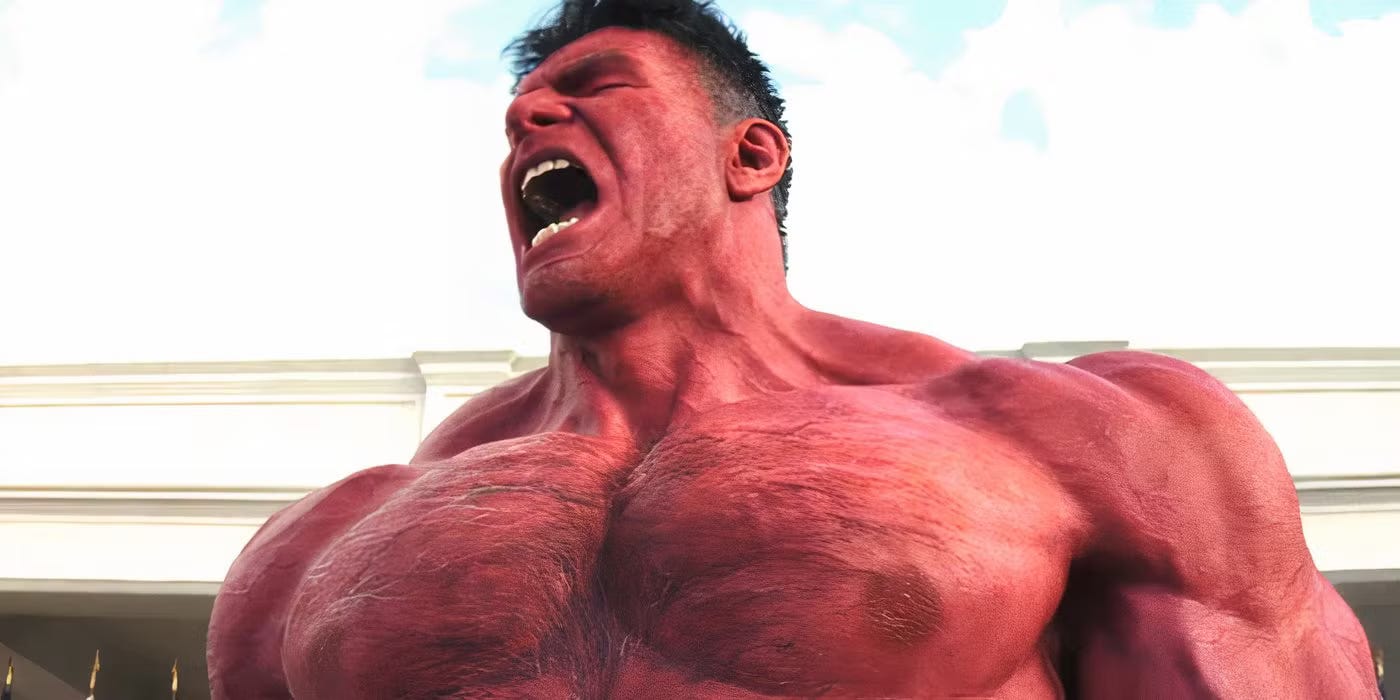
To be fair to the actors involved, the haphazard script isn’t their fault. The cast does a decent job with the material they are given and Harrison Ford is easily the standout player when his role of Thaddeus Ross could have been an easy phoned in performance for a quick paycheck. Yet when does transform into Red Hulk, he’s only on screen for a few minutes. Supposedly Ford will reprise Ross again at some point, but fans will definitely be disappointed at how brief his fight with Sam Wilson’s Captain America is. Anthony Mackie does his best to hold the film together and Danny Ramirez is a better new Falcon than I thought he would be. Giancarlo Esposito, however, is completely wasted when the trailers featured him prominently. All the reshoots made me wonder what was actually supposed to happen because these new supporting characters are hardly given enough screen time to provide the development they need.
One can’t help but get the sense that the creatives behind the MCU seem to be in a bind with just where to take this billion dollar franchise next. Yes, Secret Wars is the big event that all of this is leading to, but the hype doesn’t feel organic. A few missteps along the away notwithstanding, most of films in the Infinity Saga felt like an important piece of the puzzle. Phases 4 and 5 of the MCU in comparison have seen far more duds than hits with audience apathy being the inevitable result.
So with yet another largely forgettable MCU film, what comes next? Regarding films this year, Thunderbolts* looks ok and The Fantastic Four will probably be good. Daredevil: Born Again is the only television series that anyone seems to care about. Avengers: Doomsday and a sequel to Spider-Man: No Way Home are planned for 2026, but you can bet that the latter will get delayed given its sluggish production. Two untitled films were announced in 2024 as planned for Feb. 13, 2026 and Nov. 6, 2026. Who knows what those are or if they’ll even happen. I would also be surprised if Avengers: Secret Wars currently slated for May 7, 2027 didn’t get delayed either.
Amid all that release chaos, Captain America: Brave New World will go down like Black Panther: Wakanda Forever and Ant-Man and the Wasp: Quantumania as yet another completely pointless entry in the MCU that no one remembers. After Avengers: Secret Wars comes out, Disney is going to need to take a long break and seriously re-evaluate what direction to take these struggling films in. Unlike Star Wars, the MCU is still somewhat of a culturally relevant franchise and I think it can be saved within the next few years. Hopefully entries like Brave New World are just the final scraps of failed created-by-committee projects decided years ago and Marvel can get its act back together sooner rather than later.
Foreign Perspectives is a reader-supported Substack. If you like my work and have come this far as a new reader or free subscriber, consider opting for a paid subscription so I can continue writing in-depth articles such as these on a regular basis. Your support is greatly appreciated!


